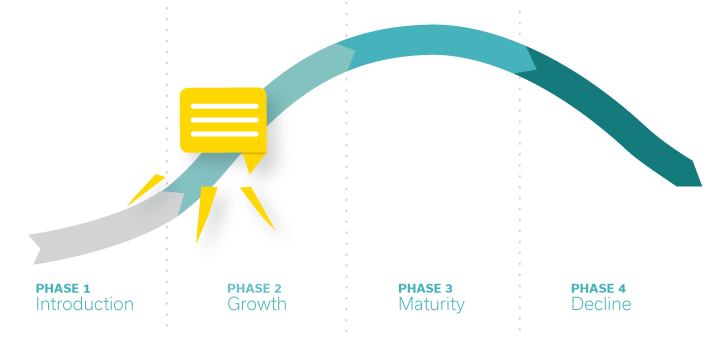The legendary investor John Doerr wrote a famous book entitled Measure What Matters. This book outlines Doerr’s central management theory around Objectives and Key Results (OKRs).
Doerr prescribes that teams align around large, meaningful Objectives, and track progress against those Objectives using discrete, measurable Key Results. The OKR system gives an organization clear, quantitative targets. OKRs are action oriented, and encourage a mix of bottom-up and top-down goal-setting. OKRs are inherently work in progress, not commandments chiseled in stone.
How can the OKR philosophy apply to clinical research? Every interventional clinical study’s end goal (Objective) is to determine whether or not a therapy will advance to market, or be rejected and determined non-efficacious. Studies are clearly defined by study protocols, which detail the hundreds, or thousands, of discrete tasks that are required to deliver the Key Results (e.g. study endpoints).
Clinical research staff form the backbone of every clinical trial’s operations, handling tasks ranging from answering potential participants’ questions about the therapy and following up with enrolled participants to encourage adherence, to ensuring investigators fill out necessary regulatory forms to remain in compliance with Institutional Review Board protocols. Clinical Research Associates’ involvement and diligence in every protocol-defined task is vital to the success, and timeline, of studies.
However, with only 30,000 clinical research associates throughout the US, and with turnover rates as high as 25%, study teams are under pressure to execute increasingly complex trials with less CRA oversight. The COVID pandemic exacerbated these labor shortages significantly, as CRAs that were experienced with in-person trials were forced to juggle larger portfolios of both in-person and decentralized (remote) trials.
It’s clear that clinical research associates and study sites are nearing the point of burnout. Today, 44% of clinical research staff report high emotional exhaustion, one of the principal causes of burnout. Meanwhile nearly 74% of CRC’s have thought about changing jobs. This problem has become paramount, as the Association of Clinical Research Professionals went as far as hosting a webinar on ‘The New Work Life Balance in Clinical Research’ to help site staff better navigate this new work environment.
What can study leads and investigators do to address site overload and CRA burnout?
Revisiting Doerr’s core OKR tenets, you can’t manage what you don’t measure. Recognizing that many site staff are exhausted, manufacturer study teams must consider how to work with clinical trial staff more effectively. Trial staff are essential and critical to bringing new and innovative therapies to market.
There are three clear opportunities to improve manufacturer-site partnerships.
-
Tighten the site-to-manufacturer feedback cycle
Manufacturers typically receive feedback from sites at quarterly or annual study team meetings. This feedback cycle is too slow to make on-the-fly adjustments to site training or support, as each day of delay (e.g. where a site has not been trained on the consent process) can extend the recruitment period and push out the study timeline.
-
Gather both quantitative and qualitative site feedback
Site feedback is often collected qualitatively, or ad hoc, making it difficult for study leads to measure site satisfaction over time, or benchmark site preparedness across a portfolio of studies in the same therapeutic area.
-
Triage and respond to site-escalated issues in real-time
Manufacturers usually rely on backwards-looking indicators to identify sites at risk of underperformance. Sites are often not flagged as high-risk until they have missed several months of their recruitment targets, or study accruals. Manufacturers have an opportunity to move upstream and monitor early warning signals of potential underperformance, such as low site confidence in their ability to explain the study to a potential participant.
Traditionally manufacturers have utilized phone calls, and long extensive interviews after a trial has completed to gather staff satisfaction data and feedback. This process has proven cumbersome for manufacturer study teams and site staff who are anxious to move on to their next trial.
Going forward, manufacturers must implement consistent and pervasive capabilities to measure clinical trial staff preparedness and satisfaction. Doing so will lay the groundwork for increasingly constructive conversations between trial staff and manufacturer study teams. What does this look like when deployed in a real-world setting?
For example, Lifelink Systems recently launched site staff satisfaction capabilities for a major pharmaceutical manufacturer for a large Phase III trial with 30+ sites both inside and outside of the United States. The solution, which was integrated into the Clinical Trial Management System (CTMS), engaged hundreds of site staff with low-friction, automated conversations on a monthly basis.
Each site staff interaction assessed their experience in working on the study, how well staff felt they communicated with manufacturers, and how well staff felt they communicated with the contract research organization working on the study. Each assessment took staff just over a minute to complete, leading to far higher completion rates and engagement than traditional phone interview or survey mechanisms. Sites with staff who self-reported low satisfaction, preparedness, or confidence were escalated to study teams in real-time for further discussion.
This is what the future of manufacturer-site partnerships can look like: sites can escalate potential study issues in real time. The manufacturer that Lifelink Systems worked with has seen a 90% acceleration in site feedback cycles.
Measuring what matters can enable manufacturers and trial staff to collaborate more effectively, improving relationships and accelerating therapy speed to market.








